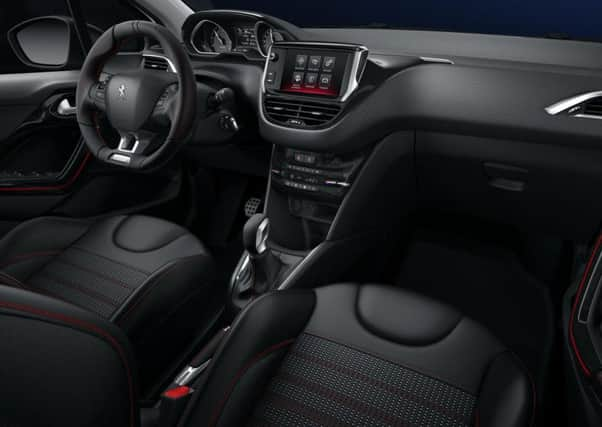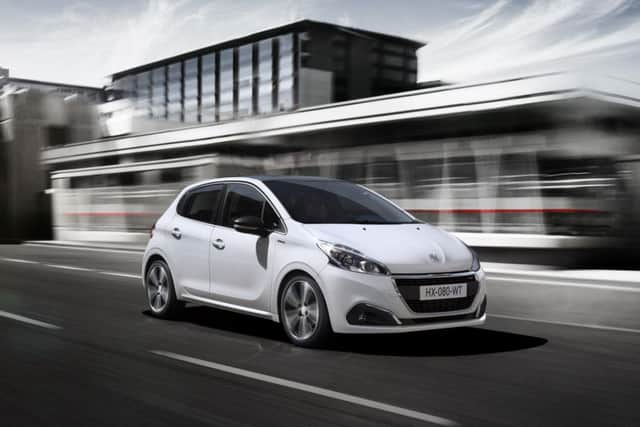208 GT Line purrs with Peugeot pedigree


It began as a tool maker in north-eastern France in 1810, made its first push bike in 1830, coffee grinders from 1840, pepper mills from 1874, and then motorbikes in 1898. It still makes them all and is France’s last national motorbike company.
Everything carries its lion logo, which sits proud on the nose of the car here, the jauntily titled 208 GT Line. The suffix gives the game away that it is not a very hot hatch, but in that mould – rather like Audi’s S Line. The GT Line is a visual mood changer, the sort of car which will appeal to the young and the would-be young again buyer.
Advertisement
Hide AdAdvertisement
Hide AdIt is not outrageously fast – so no huge impact on insurance and running costs and maybe, I said maybe, not too worrying for parents if their next in line are tooling around in one.


I took instantly to this 208. With 110 horse power it was nippy enough, easy to park, and cheap to use – usually nudging 50 miles a gallon. That’s not shabby at all from a petrol engine which on paper matches a 0-62mph time of 9.6 seconds and 118mph flat out with, in the lab, 103g CO2 and an overall 62.8mpg.
Actually the once familiar 0-60mph time may clip 9 seconds because 60 is the speed it will reach in second gear, having reached 30 in first gear. Its pace is not far off that of its great grandfather, the original 105bhp Peugeot 205 GTI, which could dust off 0-62 in under nine seconds, its advantage being 10 per cent lower weight and not being smothered by emissions legislation and a catalytic converter.
The 208’s engine is an 1199cc three cylinder, which delivers its 110bhp at 5500rpm, just shy of its 6000rpm red line. Its jolly nature and generous torque of 151lb ft at 1500 give good low-speed flexibility and a gutsy but not raucous response. In fact this is a very sweet engine, smooth and not throbby like some earlier three-pot mills. Owners may aspire to beat 60 miles a gallon, which will be possible on certain roads. Peugeot helpfully (and optimistically) estimates you will pay £973 for petrol in 12,000 miles, based on the 62.8mpg overall figure and fuel at 112p a litre. In my sort of driving, based on the trip computer, those 12,000 miles would cost at least £1,300. A year’s road tax is a mere £20.
You’ll look at a 208 for its “looks”, with a nose more pug-like than leonine. It’s a smaller sibling to the 308, which was a recent and I think surprising European Car of the Year. The main sizing differences are in the rear seats and luggage space. If you travel lightly loaded the 208 is a realistic fit for easy parking and nimble city driving. One ergonomic glitch you’ll probably get sorted out in your mind is the high level instrument panel. Depending on your seating you’ll be looking through or over the steering wheel, which is adjustable up/down and in/out.
After several days I was at peace with the layout. Most of the controls are conventional switches, with some duplication and in-car technology like phone connection, speed warning settings and limiters on the touch-screen panel. The GT Line is at the top of the trim levels, bar the higher performance GT versions. It comes with three doors and the 1.2 engine and five gears at £16,095. Add just £600 for the five-door body. An electronic automated gears box is an additional £1,000. Diesel engines in 100 and 120bhp tune cost £17,045 and £17,645 (add £600 for the five-door).
The three-cylinder lightweight turbo engine is in a range made by PSA Peugeot Citroën at the Française de Mécanique plant in the former coal mining town of Douvrin, near the border with Belgium. The 208 is Europe’s eighth bestseller in the first nine months, with sales well behind its classmates the Fiesta, Corsa and Polo.
My car being a Press demo model, it had some extras which added to its appeal and its price – though not excessively. The silvery, semi-matt textured paint was £645 and despite looking vulnerable survived my now regular reversing alongside bushes test. It also looks hot, and knocked years off my official age.
Advertisement
Hide AdAdvertisement
Hide AdEmergency braking (not needed) was £250. The navigation (good) and SOS call-out and digital radio (patchy on the “tops”) was a reasonable £650, which makes an after-market stick-on gadget look pricey. Parking sensors and a really clear reversing camera were £500 and an almost full length glass roof with groovy blue perimeter illumination and an electric blind was £400.
GT Line kit includes some fetching 17-inch alloys (with a full-size spare) which are susceptible to minor kerb contact, black sports seats and piano black control and door segments and grille with red stitching or detailing. There are aluminium pedals and door sill plates and electric/folding mirrors with a gloss black shell.
Verdict: Hard not to like. A good blend of performance and economy with driving enjoyment. Options are sensibly priced, too.